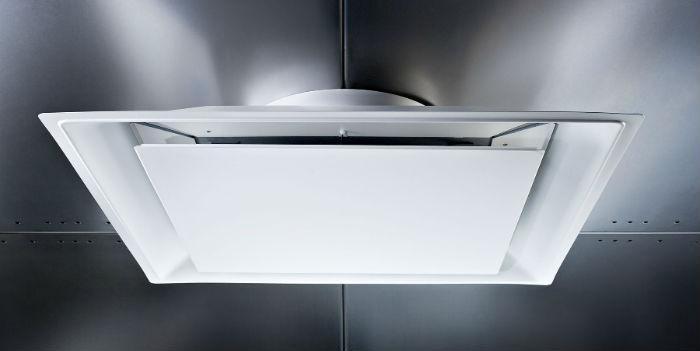 Technical developments and access to computer programs that simulate and analyze the behavior of systems of variable volume, allow to design optimal systems in terms of energy saving.
Technical developments and access to computer programs that simulate and analyze the behavior of systems of variable volume, allow to design optimal systems in terms of energy saving.
by Alfredo Sotolongo*
The most economical energy to produce is the one that is saved!
At the beginning of 2016 I concentrated on writing articles related to the new trends in the design of efficient air conditioning systems, where all fluids: air, water and refrigerant, vary in volume to compensate for the thermal load at each moment of the day. It is established that the thermal load present in many structures represents about 60% to 70% most of the time.
Therefore, by varying the volume of the three fluids in coordination with each other, the efficiency of the system is maximized, reflecting savings never before seen in air conditioning systems. This is achieved by using variable frequency drives where the equation reflects the relationship between horsepower and revolutions per minute, engine RPM, which we call affinity laws:
- HP1/HP2 = (RPM1/RPM2)ʒ
- Where:
- HP1 = Original horsepower.
- HP2 = Resulting horsepower.
- RPM1 = Original revolutions per minute directly proportional to the original volume.
- RPM2 = Reduced revolutions per minute directly proportional to the reduced volume.
- Therefore HP2=HP1/(RPM1/RPM2)ʒ
Again we clarify that in the case of air and water, centrifugal fans and centrifugal water pumps, there may be limitations in the minimum rotation speed since there are resistances such as friction in the bearings. However, whenever the rotation and therefore the volume is reduced, the energy savings are considerable. In the case of variable refrigerant this limitation does not apply and the reduction in rotation of the centrifugal compressor can be greater. This is because there is no additional friction as the bearings are magnetic.
Over the past two years, manufacturers such as Acutherm have developed combinations of controls to maximize the efficiency of the variable volume system. When variable volume of air is applied, the purpose is to subdivide the conditioned area into as many zones as possible and this is achieved when each diffuser is a control point with its thermostat integrated.
Acutherm has invested considerable human and financial resources to develop variable air volume systems that operate at low sound level, minimizing pressure drop and avoiding overcooling and overheating. In addition, these systems contribute to reducing the electrical consumption of the fan motor of the air conditioning unit.
Through computer programs that analyze the design of variable volume systems, such as the so-called EnergyPro, the energy savings when using Acutherm's smart diffusers are demonstrated. Below I list the benefits of the variable volume system that highlight these savings:
1) Low pressure systems. All diffusers are terminals that operate at low pressure. Well below the boxes of variable volume.
2) Reduction of cold air below the minimum of the boxes. They allow to lower the volume of air up to below 10%. This means that cold air can be reduced to the point where overcooling is avoided, as long as local regulations allow.
3) The program identifies areas of high thermal load concentration. Areas that due to their use and occupation, require greater capacity should be zoned separately.
4) Develop a realistic model. Energy analysis based on averages simplifies the calculation but does not accurately estimate the diversity that exists in real buildings.
5) Individual temperature control for each diffuser. Each Acutherm smart diffuser is an independent control area with its integrated thermostat and gate. This prevents that in very small areas, when they are unoccupied, it is presented over cooling or overheating.
6) It is avoided to use overheating in the diffusers. First because many municipal governments prohibit it and second because it is an unnecessary waste of energy.
The EnergyPro program, developed by an independent company, has integrated models from several manufacturers including Acutherm. When the data is entered to do the analysis, in the case of a system using Acutherm, it is only necessary to select the model of the diffuser. It is an easy-to-use program in which the result of the energy analysis uses as a basis the information of the United States Department of Energy DOE 2.1 and is based on the ASHRAE 90.1 standard. It also has tools included to calculate mechanical equipment and life cycle cost.
Technical developments and access to computer programs that simulate and analyze the behavior of variable volume systems, even if they are only an idea, allow the design of optimal systems in terms of energy saving.
If you need more information on any of the topics covered in this column, please contact me at the mail: [email protected]
* President of Protec, Inc., is certified as a professional engineer in Puerto Rico and the state of Florida; has more than 40 years of experience in the application and sale of systems and equipment for energy conservation. He is a member of ASME (American Society of Mechanical Engineers), AEE (Association of Energy Engineers), ASHRAE and was president of the Miami chapter of that association.














